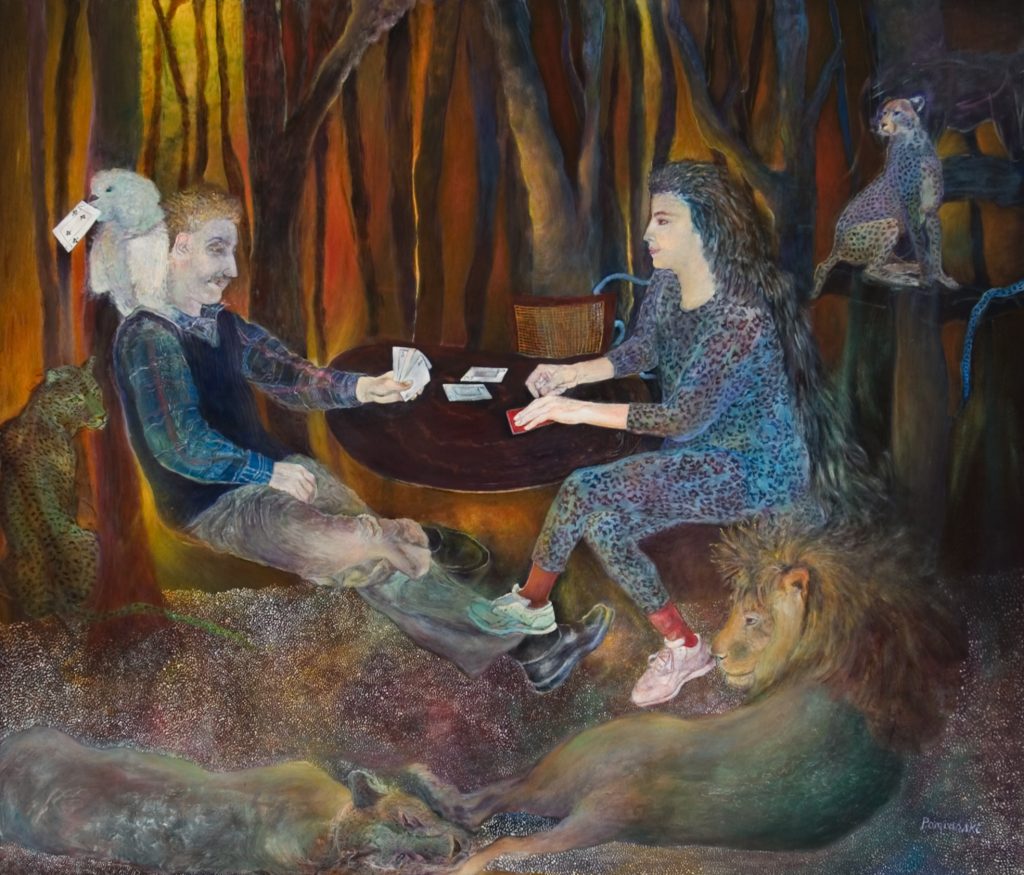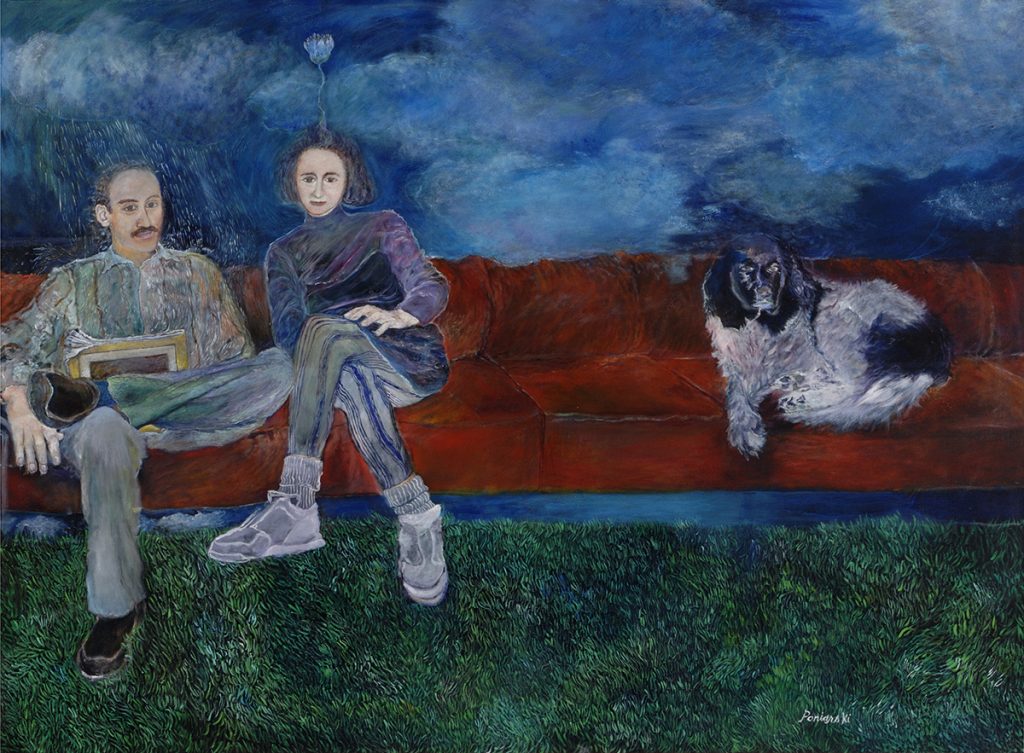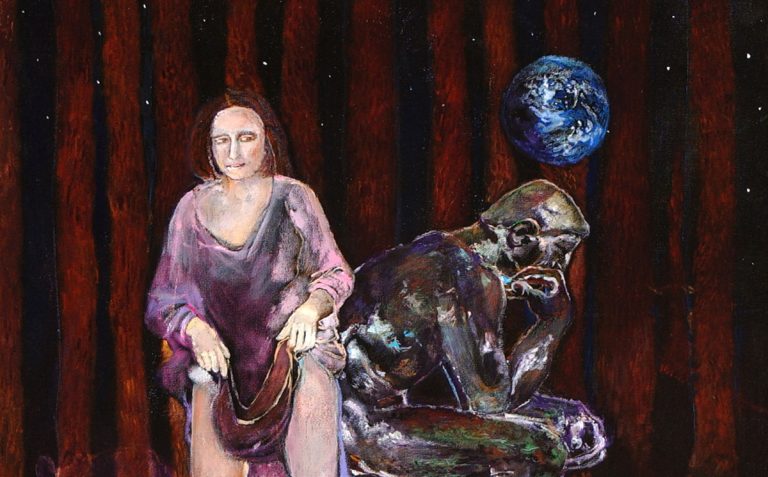Ruth Poniarski’s journey into art began in the discipline of architecture. After completing her Bachelor of Architecture at Pratt Institute in 1982, she spent ten years working in construction, mastering the logic of design and the rigor of structure. But in 1988, she made a decisive shift. Turning to painting, she traded the measured certainty of blueprints for a world built on imagination, symbolism, and introspection.
Her paintings weave together surreal forms with strands of mythology, philosophy, and literature. What emerges are visual spaces where archetypes and dreamscapes intersect. Instead of documenting the visible world, Poniarski uses paint to reveal unseen landscapes of memory, conscience, and time. Each canvas holds its own architecture—not one of steel and concrete, but of ideas and emotion.
Atlas and Eve

This painting centers on two archetypal figures: Eve and Atlas. Eve, often reduced to the role of transgressor, appears here as something more layered—a “villain of truth,” a phrase that repositions her not as condemned but as complex, carrying both burden and possibility. She forges a branch from a solitary leaf, a gesture of growth in exile.
Atlas, straining under the weight of the heavens, mirrors this struggle. Together, they embody survival in different registers—one lifting the cosmos, the other seeding the earth. Around them spirals a meditation on time and energy: spores, atoms, consciousness, the gradual rise of civilization from wilderness. The work frames endurance not as punishment but as a human condition. Eve’s cultivation parallels Atlas’s burden. Both hold the world in different ways.
Who’s Game #2 Dawn

This work opens in the hush of daybreak. The sun edges the horizon, creatures stir, and the veil of dreams thins. The title itself suggests risk and possibility—life as a game that restarts with each dawn.
The canvas captures that liminal moment when night surrenders to day, when identity regathers before the demands of waking life. Time is a threshold. Each morning, we cross it, leaving behind hesitation for action. The painting reflects the renewal of consciousness and the fragile recognition of self at the edge of silence.
In this piece, existence is shown not as a fixed state but as cyclical—reborn with every sunrise, redefined with each new crossing.
Tele-Vision, The Endless Couch

Here, Poniarski turns her surreal lens on modern spectatorship. The “endless couch” is both familiar and unsettling—symbol of comfort, stagnation, and perpetual watching. The television becomes the filter through which history and reality are consumed, replayed, and altered.
Time itself feels suspended in this work. We are distanced from direct experience, yet within that passivity lies a strange potential. The phrase “the devoted waters of another” suggests imagination brewing even in stillness, where fragments of what we watch can become seeds of creation. The couch, though endless, is not wholly confining. It is also a site where transformation can begin.
Closing Reflections
Ruth Poniarski’s paintings move between the mythic and the everyday. Atlas and Eve reframes exile as endurance. Who’s Game #2 Dawn follows the rebirth of consciousness at the edge of morning. Tele-Vision, The Endless Couch examines how modern life is shaped by watching rather than doing.
Her background in architecture shows in the compositional logic of her canvases, but what drives her art is a restless imagination. She uses surrealism not to escape the real world but to question it—its myths, its rituals, its unspoken rules.
Through her work, she invites us to look inward as much as outward, to recognize how time, myth, and modern life overlap. Poniarski builds not with beams or walls, but with symbols, narratives, and visions—structures that stand as much in the mind as on the canvas.

